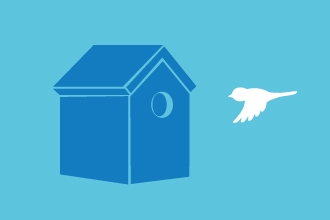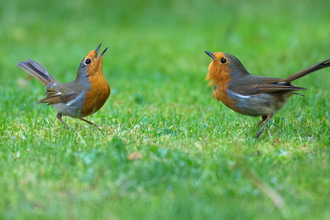Sleek black acrobats that flip upside down, tumbling through the air enjoying every moment of being in their element. Watching ravens sporting in the wind is a wonderful sight; their diamond shaped tails fanning out and the birds calling with a deep cronk and a host of other clicks and sounds.
Ravens are starting to settle down to breed; the first eggs are often laid before the end of February. If you’ve got a pair near you, you’re sure to have noticed them as they defend and proclaim their territory, regularly flying overhead cronking to each other. Most of us are aware of ravens at the Tower of London but it would surprise many to learn that they were once common in towns and cities across the UK. It’s relatively recently that these beautiful birds have bounced back from decades of persecution and they’re once again found in old haunts. Whether you’re in a Worcestershire village or town, listen for their calls and look to tall trees for a tangle of twigs and branches that make up a raven nest.
Ravens usually pair up in autumn, impressing each other with aerial displays before settling to preen and warble gently to each other. They pair for life and are usually faithful to their breeding site so, if you’re lucky enough to have a pair nearby, you could be hearing them for a few years to come. They’re nest building now and, depending on individual pairs, there should be up to four hatched young in the nest by early April. Like other members of the corvid family, ravens are avian Einsteins. Numerous studies have shown that by the time they’re four months old, the problem-solving and cognitive skills of those young ravens can rival the great apes and even seven year old children! As well as solving puzzles and both making and using tools, ravens also remember human faces, distinguishing and reacting accordingly to people who have threatened them and people who have rewarded them.
A Worcester resident, Mike Metcalf, has been following the fortunes of Worcestershire’s ravens over the last ten years. He estimates that there are more than 25 pairs of ravens across the county and, away from urban areas, they often choose large conifers that were planted years ago in large gardens and grounds; they’re often found in high-end locations! The more he observes them, the more fascinating he finds them and their complex social relationships. He’d love to hear from you if you regularly spot ravens where you live – drop me a line wendy@worcestershirewildlifetrust.org and I’ll put you in touch with him.
Whilst ravens are settling down now to raise the next generation, smaller birds are only just starting to think about it. You can help us to help them on our nature reserves by renting a nest; renters receive updates about who’s snuggling into their box and an invite to see the residents later in the year.



